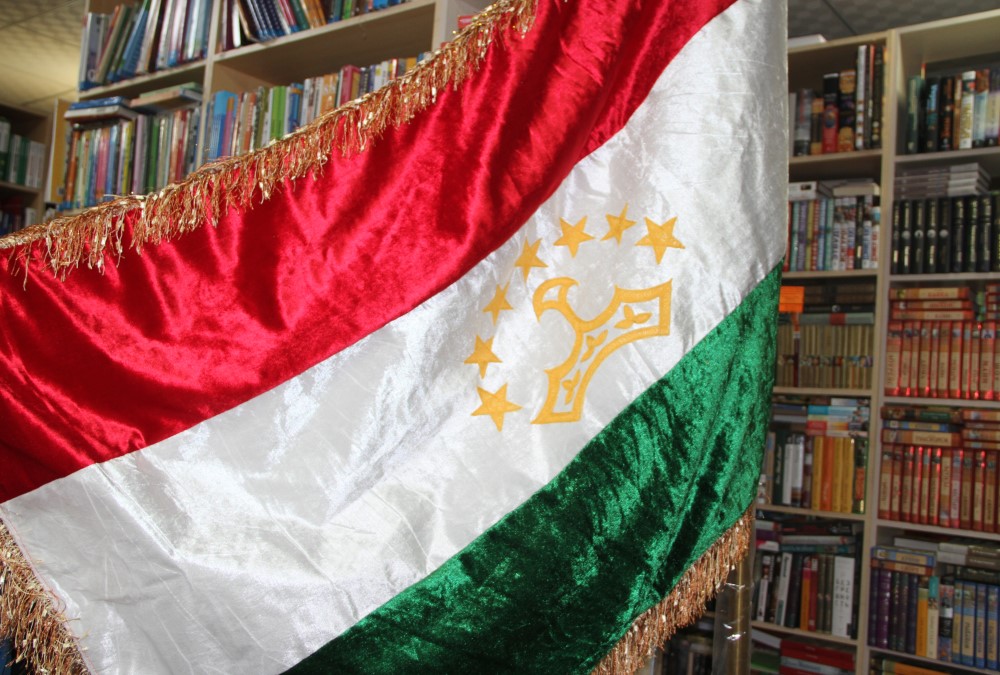On Sunday November 24, Tajikistan celebrated a National Flag Day. Celebrations to mark a National Flag Day will take place across the whole country.
On this occasion, various cultural and sports activities were held across the entire country, including Dushanbe.
On the occasion of the National Flag Day, the Dushanbe Administration has called on residents to hoist national flag over their houses.
The Dushanbe administration has also recommended that all enterprises and organizations based in the Tajik capital festively decorate their buildings, an official source within the Dushanbe Administration told Asia-Plus in an interview.
Recall, residents of Dushanbe were witnesses of the national flag of Tajikistan rising to the top of a 165-meter flagpole on May 24, 2011. The flag is 1,800 square meters, measuring 60 by 30 meters.
The flagpole has been designed and installed by Trident Support, based in San Diego.
The flagpole consists of 12-metre sections of steel tube fitted together by crane. The design phase for the flagpole began in July 2009. Fabrication of the pole's sections was completed in Dubai in October 2010. The sections were then shipped to Dushanbe, where construction of the flagpole began on November 24, 2010, Tajikistan's National Flag Day. The final assembly and erection took place during April and May 2011.
The flagpole reportedly cost 3.5 million U.S. dollars and was part of 210 million USD worth of projects celebrating the 20th anniversary of Tajikistan independence.
Tajikistan was the last of the former Soviet republics to reveal a new flag, which was adopted on November 24, 1992. The one common link between this and the 1953 Tajik SSR flag is the choice of colors - red, white and green.
The flag of Tajikistan is a tricolor of red, white, and green. The red represents the unity of the nation as well as victory and sunrise. The red also serves as symbolism of the workers, and the warriors who sacrificed their lives to protect the land. The white represents purity, morality, the snow and ice of the mountains, and cotton. The green represents the bountiful generosity of nature, fertile valleys, the religion of Islam, and the celebration of Navrouz.
Other interpretations of the colors state that the flag symbolically unifies the people of Tajik society, with the red stripe representing the manual labor class, the white stripe representing the intellectual worker class, and the green representing the agricultural class living in Tajikistan's rural or mountainous regions.
While the red and green stripes on the top and bottom are equal in size, the center stripe is one-and-a-half times that of the others.
The crown and stars are set in a rectangle taking up 80% of the white stripe's height. The crown represents the Tajik people, as the name Tajik is connected with Persian taj “crown” in popular etymology. The flag of Tajikistan features seven stars due to the significance of the number seven in Tajik traditional legends, representing perfection and happiness. According to traditional belief, the heavens feature seven mountains and seven orchard gardens with a star shining above each mountain








Untapped potential of the past year: what is Tajikistan missing?
Modernization of Qayroqqum hydropower plant fully completed
President dismisses heads of nine cities and districts
Social grievances or foreign interference? Protests in Iran and the authorities’ response
Tajikistan introduces online verification for marital status certificates
Drone operator training program launched in Tajikistan
Kish Island remains top travel destination for Tajik tourists
Tajik woman detained on suspicion of causing death of Russian blogger in botched cosmetic procedure
UK and France to deploy troops to Ukraine if peace deal reached
Mahmurod Ashourov finds Nazirbibi after Asia-Plus publication. He saved her 57 years ago
All news
Авторизуйтесь, пожалуйста